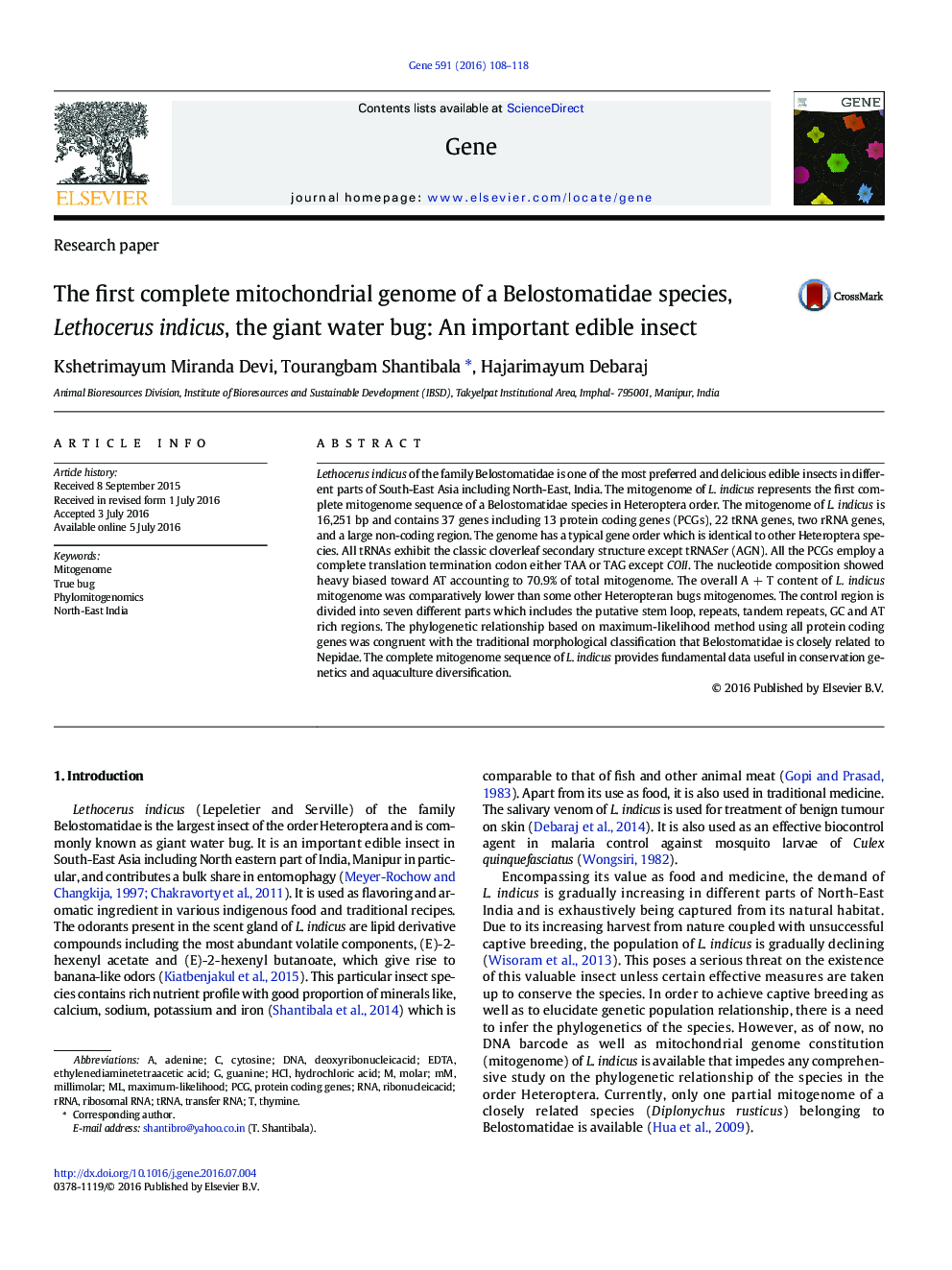| کد مقاله | کد نشریه | سال انتشار | مقاله انگلیسی | نسخه تمام متن |
|---|---|---|---|---|
| 2814823 | 1159831 | 2016 | 11 صفحه PDF | دانلود رایگان |

• L. indicus mitogenome represents the first complete mitochondrial genome of Belostomatidae family.
• L. indicus mitogenome contains 37 genes that followed usual architecture of animal mitogenome.
• Phylogenetic relationship followed traditional morphological classification between Belostomatidae and Nepidae.
• Control region is a potential genetic marker for identifying population of the lineages.
Lethocerus indicus of the family Belostomatidae is one of the most preferred and delicious edible insects in different parts of South-East Asia including North-East, India. The mitogenome of L. indicus represents the first complete mitogenome sequence of a Belostomatidae species in Heteroptera order. The mitogenome of L. indicus is 16,251 bp and contains 37 genes including 13 protein coding genes (PCGs), 22 tRNA genes, two rRNA genes, and a large non-coding region. The genome has a typical gene order which is identical to other Heteroptera species. All tRNAs exhibit the classic cloverleaf secondary structure except tRNASer (AGN). All the PCGs employ a complete translation termination codon either TAA or TAG except COII. The nucleotide composition showed heavy biased toward AT accounting to 70.9% of total mitogenome. The overall A + T content of L. indicus mitogenome was comparatively lower than some other Heteropteran bugs mitogenomes. The control region is divided into seven different parts which includes the putative stem loop, repeats, tandem repeats, GC and AT rich regions. The phylogenetic relationship based on maximum-likelihood method using all protein coding genes was congruent with the traditional morphological classification that Belostomatidae is closely related to Nepidae. The complete mitogenome sequence of L. indicus provides fundamental data useful in conservation genetics and aquaculture diversification.
Figure optionsDownload high-quality image (441 K)Download as PowerPoint slide
Journal: Gene - Volume 591, Issue 1, 10 October 2016, Pages 108–118